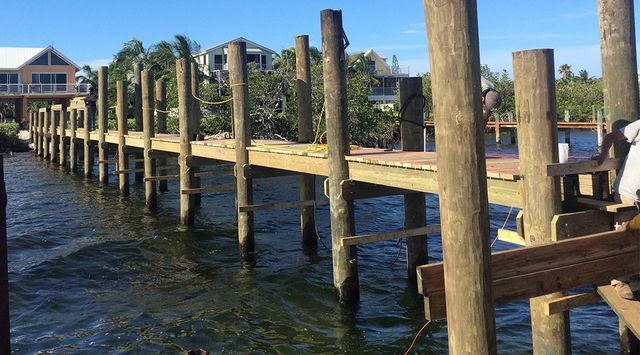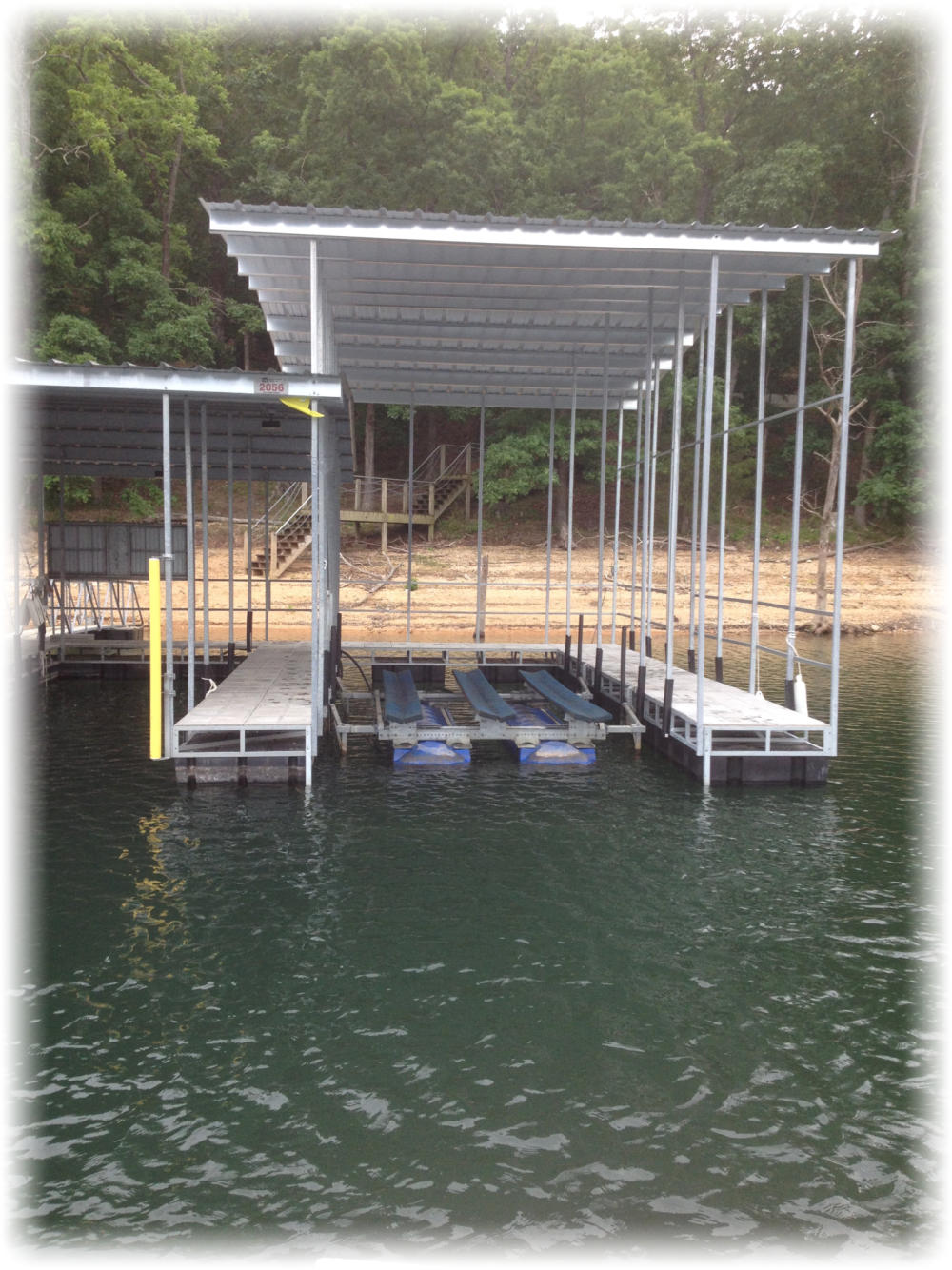Professional Insights on Resilient Dock Repairs Solutions
Professional Insights on Resilient Dock Repairs Solutions
Blog Article
Reliable Dock Fixing Techniques: Making Sure Structural Honesty
Guaranteeing the structural honesty of docks through effective repair service strategies is vital for the durability and safety and security of aquatic facilities. Ultimately, selecting the best fixing materials, such as corrosion-resistant alloys and composite products, is essential for resilience.
Evaluating Dock Damage
Evaluating dock damages is a critical initial step in guaranteeing the architectural stability and safety of any type of docking facility. This first analysis involves an extensive evaluation to determine both surprise and visible problems. Key facets to analyze include the dock's foundation, pilings, decking, and hardware. Each component should be looked at for signs of wear, rot, deterioration, or various other kinds of destruction that might endanger the structural stability.
Structural designers or certified assessors generally perform these analyses utilizing specialized strategies and tools. For instance, undersea inspections may utilize sonar tools or from another location operated vehicles (ROVs) to identify submerged damages. Over water, aesthetic evaluations are matched by utilizing wetness meters and various other analysis devices to discover underlying issues not immediately noticeable to the nude eye.

Deciding On Repair Work Products
Picking the appropriate fixing materials is a pivotal action in the dock remediation process, one that straight influences the longevity and efficiency of the repaired structure. Material option need to be driven by factors such as environmental conditions, load-bearing demands, and compatibility with existing dock parts.
In enhancement to wood, composite materials are progressively popular due to their sturdiness and reduced upkeep requirements. Composites, commonly made from a mix of plastic and timber fibers, use outstanding resistance to rot, bugs, and UV damages. For metal anchors, picking corrosion-resistant alloys such as galvanized steel or marine-grade aluminum is vital to protect against corrosion and make sure architectural integrity in saline water conditions.
Epoxy resins and marine-grade sealers are crucial for repairing splits and sealing joints, supplying a water resistant obstacle and improving the dock's overall stamina. By diligently selecting high-grade materials, dock fixings can attain resilient outcomes, thereby securing against future deterioration and ensuring safe, trustworthy use.
Architectural Reinforcement Methods
Reliable architectural support strategies are essential in ensuring the security and longevity of dock fixings. One fundamental technique includes making use of steel or composite reinforcement bars (rebar) within concrete structures. Rebar supplies added tensile stamina, avoiding cracks and dispersing lots much more uniformly. This technique is specifically effective for anchors exposed to hefty lots or extreme environmental problems.
One more crucial method is the application of fiber-reinforced polymers (FRP) These products provide high strength-to-weight proportions and excellent resistance to corrosion, making them optimal for reinforcing wood or concrete docks. FRP can be used in sheets or strips and bound with epoxy resins to boost architectural integrity.
Bracing and anchoring systems likewise read the full info here play an essential function in structural support. Cross-bracing, using metal or wooden beams, can counteract lateral pressures, minimizing swaying and activity. Anchoring systems, such as helical piers or driven stacks, supply a stable foundation by moving loads to deeper, much more secure soil layers.
Last but not least, the integration of load-distribution plates can assist disperse weight a lot more equally throughout the dock's surface, mitigating localized anxiety factors. These methods jointly make sure that anchors continue to be robust and risk-free, efficient in withstanding the roughness of their functional environment.
Advanced Repair Work Methods

Another advanced strategy includes undersea welding, which enables for repair work to be carried out without the need to dewater the location. This approach is especially helpful for dealing with structural concerns in immersed dock parts, ensuring minimal interruption to operations. Enhanced welding strategies, combined with robotic systems, deliver accuracy and dependability, thereby expanding the life expectancy of the dock.
Additionally, cathodic protection systems are applied to stop corrosion in metallic dock structures. By making use of sacrificial anodes or satisfied present systems, these methods properly minimize the electrochemical processes that cause material damage.
Finally, advanced tracking modern technologies, such as architectural health monitoring (SHM) systems, give real-time data on the problem of dock frameworks. These systems enable positive upkeep and prompt treatments, eventually making sure the long-lasting structural honesty of the dock.
Upkeep and Prevention
Maintenance and avoidance are basic principles that underpin the durability and security of dock frameworks. Regular evaluations are critical, enabling early discovery of damage, possible weak points, and ecological effects. A proactive method, involving routine checks for rust, rot, and structural shifts, minimizes pricey repair services and lengthens the dock's functional life.
Preventive steps ought to consist of using protective coatings to metal components to safeguard against rust and using treated wood to withstand decay. Furthermore, ensuring appropriate drain and air flow can protect against water accumulation, which is a common reason for structural degradation. Incorporating high quality products and adhering to producer guidelines throughout building and fixing phases likewise play critical functions in improving longevity.

Training employees in dock upkeep finest practices makes certain constant application of preventative procedures. Leveraging technical breakthroughs, such as drones for assessments and sensors for real-time monitoring, can further boost upkeep efforts. his comment is here By focusing on upkeep and prevention, dock proprietors can ensure structural stability, functional safety, and cost-effective monitoring over the dock's life expectancy.
Final Thought
In conclusion, preserving the architectural integrity of marine centers demands comprehensive dock repair work methods. Advanced fixing techniques, combined with normal upkeep techniques, ensure the dock stays secure and operational under varied environmental conditions.
Making sure the architectural honesty of docks through effective repair work methods is extremely important for the long life and safety of marine facilities.Choosing the proper repair service products is a crucial step in the dock remediation procedure, one that straight influences the durability and performance of the repaired structure.Effective structural reinforcement methods are important in making certain the security and long life of dock repair services. By focusing on upkeep and avoidance, dock proprietors try this site can make certain architectural stability, operational security, and cost-efficient administration over the dock's life expectancy.
In final thought, preserving the structural honesty of aquatic facilities necessitates detailed dock repair service techniques.
Report this page